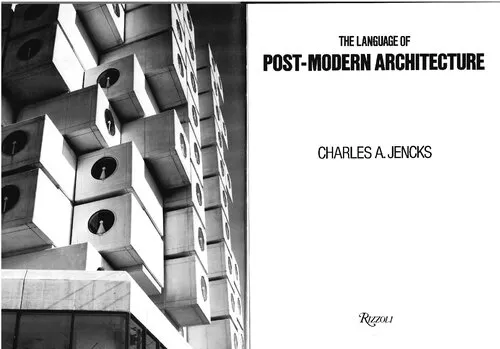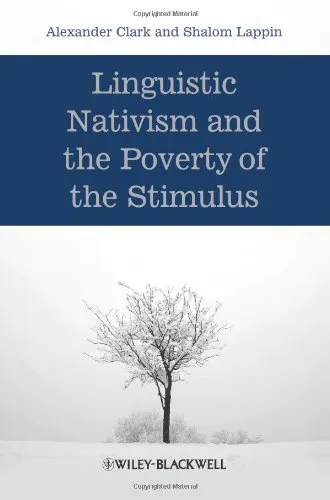The language of post-modern architecture
4.5
Reviews from our users

You Can Ask your questions from this book's AI after Login
Each download or ask from book AI costs 2 points. To earn more free points, please visit the Points Guide Page and complete some valuable actions.Related Refrences:
Introduction to "The Language of Post-Modern Architecture"
"The Language of Post-Modern Architecture" by Charles Jencks is a landmark book that transformed how architects, critics, and the public understand architectural history and modern design practices. First published in 1977, this influential work stands as a cornerstone in architectural literature, introducing readers to the concept of Post-Modern architecture as a distinct and revolutionary movement that reacts to modernism's rigidity and universality. Jencks unpacks complex ideas about architectural semiotics, symbolism, and historical context, which have fundamentally shaped contemporary thought on the built environment.
With its provocative tone, rich theoretical analysis, and sharp critiques of modernist dogma, the book rapidly became a manifesto for architects seeking new ways to integrate culture, plurality, and symbolism into their designs. It is renowned for popularizing the exact moment modernism 'died'—a key moment in the architectural history timeline. As a text, it bridges the gap between architecture as a functional discipline and its role as a cultural expression, making it an essential read for anyone interested in understanding post-modernity in the architectural world.
Detailed Summary of the Book
Jencks provides a comprehensive narrative on the evolution of architecture from modernism to post-modernism, exploring how the latter emerged as a reactionary movement to the uniformity and perceived failures of modernist ideology. He critiques modernism for its neglect of context, historical references, and the varied experiences of local communities. In its place, he advocates for an architecture that is pluralistic, contextually sensitive, and rich in symbolism.
The book divides its discussion into key chapters that explore aspects such as the symbols and languages embedded in architecture, the rise of eclecticism in the Post-Modern era, and the embrace of populism and cultural diversity in design. Through examples of iconic works by architects like Robert Venturi, Michael Graves, and Frank Gehry, Jencks illustrates how Post-Modern architecture melds the global and the local, often with playful creativity and irony. On the other end, he analyzes the philosophical and sociopolitical underpinnings of the movement, presenting architecture as a language replete with signs, metaphors, and layered meanings.
Perhaps the most famous aspect of the book is Jencks’s claim that modernist architecture died on July 15, 1972, at precisely 3:32 PM, with the demolition of the Pruitt-Igoe housing project. This dramatic declaration underscores his view that modernism had failed to address the human and cultural needs of society, and thus a new architectural paradigm was born. Beyond a critique, the book serves as an optimistic call for a richer architectural expression that embraces history, diversity, and human emotion.
Key Takeaways
- Post-Modern architecture emerged as a reaction to the limitations of modernism, emphasizing diversity, symbolism, and contextual relevance.
- The book introduces architecture as a form of communication, filled with signs, metaphors, and "languages" that speak to different cultural contexts.
- Charles Jencks demonstrates the necessity of reconciling global aspirations with local identities in architectural design.
- The demolition of the Pruitt-Igoe housing complex in 1972 became a symbolic moment marking the 'death' of modernism and the birth of a new architectural age.
- The work challenges architects to embrace plurality, creativity, and humanity in their designs, generating spaces that speak to multiple interpretations and meanings.
Famous Quotes from the Book
"Modern architecture died in St Louis, Missouri on July 15, 1972, at 3:32 PM (or thereabouts) when the infamous Pruitt-Igoe scheme, or rather several of its slab blocks, were given the final coup de grâce by dynamite."
"Post-Modern architecture is fundamentally a pluralist style that draws upon multiple languages and traditions, in service of creating spaces that are meaningful to society."
"Architecture must touch upon the sacred, the human, and the meaningful if it is to retain its relevance in a rapidly transforming world."
Why This Book Matters
"The Language of Post-Modern Architecture" matters because it presents a groundbreaking reinterpretation of architecture's purpose in society. Jencks challenges the detached formalism and rigidity of modernist thought, replacing it with a vision of architecture that is rich in cultural symbolism and historical references. His work helped to usher in a new era, inspiring architects and thinkers to consider the social, political, and artistic implications of their works.
Beyond its academic value, the book serves as a bridge between architecture and other fields such as semiotics, philosophy, and cultural studies. It demonstrates that architecture is not merely about building structures but about creating environments that resonate with human experiences and aspirations. By addressing this profound intersection of design and meaning, Jencks's work continues to inspire a fresh dialogue about the role of architecture in a diverse and interconnected world.
For students, professionals, and enthusiasts of architectural theory, this book remains essential reading. Its timeless insights into the post-modern condition and its call for a humane, eclectic, and meaningful architecture ensure its lasting relevance in architectural discourse.
Free Direct Download
You Can Download this book after Login
Accessing books through legal platforms and public libraries not only supports the rights of authors and publishers but also contributes to the sustainability of reading culture. Before downloading, please take a moment to consider these options.
Find this book on other platforms:
WorldCat helps you find books in libraries worldwide.
See ratings, reviews, and discussions on Goodreads.
Find and buy rare or used books on AbeBooks.
1287
بازدید4.5
امتیاز50
نظر98%
رضایتReviews:
4.5
Based on 0 users review
"کیفیت چاپ عالی بود، خیلی راضیام"



